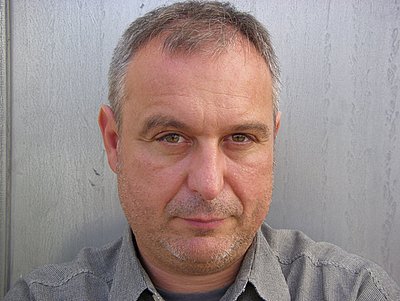Vienna 1950/60. An Austrian Avant-Garde
20. Mai 2014, 11.15 Uhr IC Lecture Room, Kollegiumgasse 2, 3. OG
Gastvortrag von PD Dr. Klaus Kastberger im Rahmen der Interface Cultures Invited Lecture Series.
Looking back on the last hundred years' art and culture in Austria, we make a strange discovery. This country had nearly been kept free of avant-gardes during the first half of the twentieth century, before it came to a veritable eruption of avant-garde art and literature in the 1950s and 1960s. lt is surprising that the historical avant-garde (movements like Dadaism, Surrealism, or Expressionism) remained a marginal phenomenon here, because there would have been a really favourable cultural environment for it. Just think of the both cultural and political impact of the fin de siecle, the provocative novel solutions in the fine arts, or twelve-tone music. The social innovations of Red Vienna would also have offered a breeding ground. The same holds true for the revolution of scientific thinking, especially the language philosophy of the Vienna Circle later emphatically evoked by Oswald Wiener as his point of reference.
The fact that there was no avant-garde movement worth mentioning in Austria's art and literature in the 1920s had a lasting effect and still made itself felt in the 1950s, which probably explains the specific conditions the avant-garde of those years found itself confronted with at its emergence. Vienna 1950/60, this cluster formed by the Vienna Group (H.C. Artmann, Friedrich Achleitner, Konrad Bayer, Gerhard Rühm, Oswald Wiener) and Viennese Actionism (Brus, Mühl, Nitsch, Schwarzkogler) is a globally unique phenomenon because of the simultaneity of avant-garde and neo-avant-garde. The theory of the avant-garde is usually based on the difference between and the succession of the two phenomena; in Vienna 1950/60, avant garde and neo-avant-garde coincided.
Klaus Kastberger
geboren 1963, Literaturwissenschafter und -kritiker (u.a. für falter, Die Presse und ORF), wissenschaftlicher Mitarbeiter des Literaturarchivs der Österreichischen Nationalbibliothek und Privatdozent an der Universität Wien. Zahlreiche Publikationen und Vorträge zur österreichischen Literatur, Leitung mehrerer FWF-Projekte (darunter: www.handkeonline.onb.ac.at), Ausstellungen („Der literarische Einfall“; „Wassersprachen. Flüssigtexte aus Österreich“; „Peter Handke und das Theater“) und Veranstaltungskonzeptionen (u.a. „Grundbücher der österreichischen Literatur seit 1945“ gemeinsam mit der Alten Schmiede Wien und dem StifterHaus Linz).
Herausgeber u.a. der historisch-kritischen Ausgabe Ödön von Horváths (ab 2009 bei de Gruyter, als Leseausgabe bei Reclam), Redaktion der Reihe „Profile. Magazin des Literaturarchivs der Österreichischen Nationalbibliothek“. Publikationen (Auswahl): Im Assessment-Center. Sprache im Zeitalter von Coaching, Controlling und Monitoring (2006); (Hg. gem. mit Konrad Paul Liessmann): Die Dichter und das Denken. Wechselspiele zwischen Literatur und Philosophie (2004); Vom Eigensinn des Schreibens. Produktionsweisen moderner österreichischer Literatur (2007); (Hg.) StifterStoffe. Materialien in der Literatur (2009); (Hg.) Peter Handke: Freiheit des Schreibens - Ordnung der Schrift (2009), (Hg. gemeinsam mit Katharina Pektor): Die Arbeit des Zuschauers. Peter Handke und das Theater (2012).

